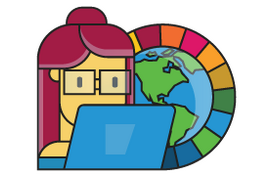In Pakistan a huge number of people travel through public transport because it is cheap compared to private cabs and cars that not many can afford to travel in on a daily basis. The forms of public transport include buses, vans and suzukis that carry passengers in bulk on well-defined and routes allocated to them by government. The number of people who need access to public transportation facilities is more than the means of transport available and hence rush hours are often chaotic and annoying for people who travel every day. People find their selves helpless when they find that the bus or van that they had been waiting for so long is already full with passengers. Despite having fixed pickup and drop off locations, many a times daily travellers cannot find seat/space in vans or buses. This results in delays in reaching workplace and back home resulting in increased frustration among travellers. However this is only one side of the picture. The owners of public buses and vans also get troubled when they do not find passengers during non-rush hours and travel without full seats hence paying for the fuel costs from their own pockets.
The solution to this problem is an application that works by facilitating both customers and drivers. It can facilitate customers by providing them real-time information about the nearest public transport vehicles destined to their route and their remaining seating capacity. The passengers may also see the number of passengers waiting at other stops for same bus that they want to travel in. Having access to such information allows the passengers to make informed decisions and hence avoid unnecessary delays currently caused by waiting for vehicles that often come full.
Besides eliminating delays, the application can also minimize waiting times by diverting more vehicles to congested routes. This becomes possible when passengers update their current waiting location by selecting one of the public transport stops displayed by the application/system. The application updates the drivers about the total number of passengers waiting at each stop with the desire to be dropped off at one of the stops located within the proximity of route. The drivers can opt to travel on the route that has the highest number of passengers waiting and this may also reduce customers waiting time.
After changing the route, the driver can update the system about the intended route as well as the number of available seats just with a single click. The GPS tracker can gather even more detailed information such as bus/van’s current location and time left to reach passenger’s current location to be shared with waiting passengers.
To summarize, the system serves by minimizing the supply demand gap of public transport vehicles on each route. Having real-time information at hand helps the passengers in making knowledgeable decisions about how to travel while avoiding delays and annoyance. The system also minimizes waiting time of each customer by diverting vehicles to congested routes. At the same time, the drivers can also maximize profits by travelling on routes that have highest passenger traffic at a particular time during the day. All in all, people get to travel at the most affordable prices with increased ease and the vehicles owners earn maximum profits by not wandering on less crowded routes.


Comments (35)
t
testing
t
testing
t
testing
t
testing
t
testing
t
testing
t
testing
t
testing
t
testing
t
testing